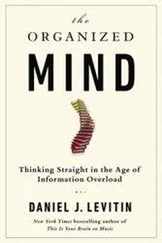Here is the ultimate irony - a human being laughing in the face of pain. OK, why would the patient do this? Well, seeing this patient made me ask an even more basic question, why does anybody laugh? Why do all of you here laugh, OK? Now a martian ethologist watching all of you here would be very suprised every now and then. It is a species-specific trait, laughter. Every now and then all of you here stop what you're doing, shake your head, make this funny staccato rhythmic sound, hyena-like sound. Why do you do it? Now clearly laughter is hard-wired, it's a "universal" trait. You see it every society, every civilization, every culture, society, has some form of laughter and humour - except the Germans.
So this suggests strongly it's hard-wired in the brain and this raises an interesting question. Why did it evolve in the brain, OK, how did it evolve through natural selection? When you look at all jokes and humour across societies, the common denominator of all jokes and humour despite all the diversity is that you take a person along a garden path of expectation and at the very end you suddenly introduce au unexpected twist that entails a complete re-interpretation of all the previous facts. That's called a punch-line of the joke. Now obviously that is not sufficient for laughter because then every great scientific discovery or every "paradigm shift" would be funny, and my scientific colleagues wouldn't find it amusing if I said their discoveries were funny.
OK, the key ingredient here is, it's not merely sufficient that you introduce a re-interpretation but the re-interpretation, the new model you have come up with should be inconsequential, it should be of trivial consequence. It sounds a bit abstract so let me illustrate with a concrete example. Here is a portly gentleman walking along, he is trying to reach his destination, but before he does that he slips on a banana peel and falls. And then he breaks his head and blood spills out and obviously you are not going to laugh. You are going to rush to the telephone and call the ambulance. But imagine instead of that, he walks along, slips on the banana peel, falls, wipes off the goo from his face, looks around him everywhere, and and then gets up, then you start laughing. The reason is I claim is because now you know it's inconsequential, you say, oh it's no big deal, there's no real danger here. So what I'm arguing is, laughter is nature's false alarm. Why is this useful from an evolutionary standpoint? So what you are doing with this rhythmic stocatto sound of laughter is informing your kin who share your genes, don't waste your precious resources rushing to this person's aid, it's a false alarm everything is OK. OK, so it's nature's OK signal.
OK, now what does this got to do with my patient in Vellore? Let me explain. When we examined his brain, when we do the CT scan we found there was damage to the region called the insular cortex on the sides of the brain. The insular cortex receives pain signals from the viscera and from the skin. That's where you experience the raw sensation of pain but it turns out there are many layers to pain. It's not just a unitary thing. From the insular cortex the message goes to the amygdala, which we encountered earlier in the context of the Capgras syndrome and then to the rest of the limbic system, and especially the anterior cingulate, where you respond emotionally to the pain, to the agony of pain and take the appropriate action. So my idea was, maybe what's happened on this patient is, the insular cortex is normal. That's why he says, doctor I can feel the pain, but the message, the wire that goes from the insular to the rest of the limbic system and the anterior cingulate is cut.
Therefore you have the two key ingredients you need for laughter and humour, namely one part of the brain signalling a potential danger, my god there is something painful here, but the very next instant the anterior cingulate says but I'm not getting any signal. Big deal, there is no danger here, forget it, OK. So you got the two key ingredients and the patient starts laughing and giggling uncontrollably, OK. So it is a disconnection similar to what we saw with the Capgras patient.
So we have seen several syndromes here which suggest that you can look at neurological oddities, neurological syndrome and learn a great deal about the functions of the normal brain. I would like to conclude with a quotation from my previous book, Phantoms in the Brain , "There is something distinctly odd about a hairless, neotenous primate that has evolved into a species that can look back over its own shoulder to ponder its own origins. Odder still, the brain cannot only discover how other brains work but also ask questions about itself, who am I? What is the meaning of my existence, especially if you are from India? Why do I laugh? Why do I dream, why do I enjoy art, music and poetry? Does my mind consist entirely of the activity of neurons in my brain? If so, what scope is there for free will? It is the peculiar recursive quality of these questions as the brain struggles to understand itself that makes neurology so fascinating. The prospect of answering these questions in the next millennium is both exhilarating and disquieting, but it's surely the greatest adventure that our species has ever embarked upon."
So I hope you'll stay with me for all the remaining lectures, thank you very much.
Lecture 2: Synapses and the Self
Our ability to perceive the world around us seems so effortless that we tend to take it for granted. But just think of what's involved. You have two tiny upside down distorted images inside your eyeballs but what you see is a vivid three-dimensional world out there in front of you and this transformation is nothing short of a miracle. How does it come about?
One common fallacy is to assume there is an image inside your eyeball, the optical image, exciting photoreceptors on your retina and then that image is transmitted faithfully along a cable called the optic nerve and displayed on a screen called the visual cortex. Now this is obviously a logical fallacy because if you have a screen and an image displayed on a screen in the brain, then you need another little chap in there watching that image, and there is no little chap in your head. And if you think about it, that wouldn't solve the problem either because then you'd need another little guy in his head looking at the image in his brain and so on and so forth, and you get an endless regress of eyes and images and little people without really solving the problem of perception.
So the first thing you have to do to understand perception is to get rid of the idea of images in the brain and think instead of transforms or symbolic representations of objects and events in the external world. Just as little squiggles of ink, print or writing, or dots and dashes in the Morse code can symbolize or represent something even they don't physically resemble what they are representing, similarly the action of nerve cells in your brain, the patterns of firing, represent objects and events in the external world even though they don't in any way resemble what's out there in the world. Neuroscientists are like cryptographers trying to crack an alien script, an alien code, in this case the code used by the nervous system to represent objects and events in the external world.
So today's lecture will be about the process we call seeing - about how you become consciously aware of things around you. As in our last lecture, I'll begin by telling you about patients with strange visual defects and then explore the wider implications of these syndromes for understanding the nature of conscious experience, how the activity of mere specks of jelly in the visual areas of your brain gives rise to all the richness of your conscious experience, the redness of red, your ability to recognize a burglar or your lover, and how does that happen.
Читать дальше











![John Bruce - The Lettsomian Lectures on Diseases and Disorders of the Heart and Arteries in Middle and Advanced Life [1900-1901]](/books/749387/john-bruce-the-lettsomian-lectures-on-diseases-and-disorders-of-the-heart-and-arteries-in-middle-and-advanced-life-1900-1901-thumb.webp)
